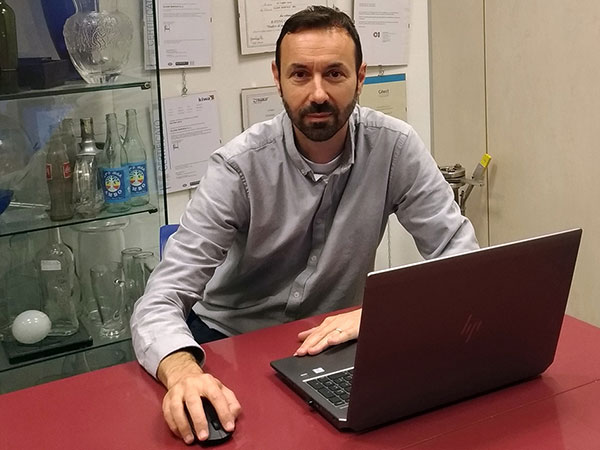1. In our last interview with your CEO Puccioni, we learned that GS was founded by people with extensive experience in the glass industry. How has that experience influenced the company’s services to the glass industry?
(I am Emanuele Donati, Sales Manager in Glass Service.)
Over the years, Glass Service team members have experienced the evolution of this industry, the advances in research, technology and engineering in the field. This taught us the value of education, investing in young engineers and developing technologies. In this way, we continue to contribute to that legacy, keeping an eye on the future while utilising the lessons of the past.
We also used that know-how to build GS into a one-stop shop where our clients have access to everything they may need, from a turnkey plant to highly specialised furnaces, automations and systems, tailor-made technological solutions, dedicated customer support, on-site training and after sales assistance.
2. In your daily work, what would you say are the biggest problems you’ve noticed your clients are facing?
Many clients aren’t able to utilise standardised furnaces and components. For example, some may have space limitations and require furnaces designed to fit within their existing structure. Others may need only a small, targeted intervention in an otherwise operational plant. Whatever the case, our skilled engineers are able to tailor solutions to their exact needs. We fabricate and test components in-house, install on-site and work side-by-side training our client’s team to ensure the highest level of quality and success with the least amount of disruption to their workflow.
3. Can you give me some examples of GS’s customised solutions for clients?
There are several common problems that glass manufactures face, each in their own way. For example improving the quality of the finished product by reducing or eliminating the annoying cat scratches, the defects that affect the quality of the finished product and create waste. The Glass Service stirrer, available in two different configurations, has the advantage of being installed on one side, leaving more space for maintenance and for refractory paddle replacement. Adding our stirrer machine not only removes cat scratches but also has a secondary effect of glass homogenisation.
Another problem some of our clients face is limited space, requiring components with reduced dimensions. They may need customisations, such as a stirrer with an integrated water box for the spout change and a crane tool. Down to the smallest detail, we are able to customise components according to the client’s request.
Precision glass level checking is often requested as well. Our glass level machine is able to precisely self-adjust to within 0.1 mm. We have also created software that recognises the zero level and adjusts itself automatically.
And finally, we have built and launched 15 borosilicate glass furnaces for the medical sector and each reflects the demands of the client’s customisation requirements in terms of glass characteristics. We have developed projects with both Danner and Vello lines and with refractory design solutions to ensure a four-year run of stable production with reduced energy consumption.
4. Right now, climate is a hot topic. Does Glass Service offer any services or customisations that can help your clients be more efficient and reduce their CO2 carbon footprint?
We recognized there was an opportunity for energy conservation and reducing waste in the distributor and forehearths, because despite consuming a significant amount of energy, these areas are not normally optimized in terms of energy saving and environmental impact. So Glass Service is investing in research and development to propose new heating solutions through oxy-fuel combustion and systems with electric resistances.
Right now we are working on utilising electrodes and furnace combustion systems with electric boosting as a more efficient means of heating furnaces. We already have more than 40 projects installed all over the world and we can offer systems for melting end booster, thermal barrier, refining booster and throat booster in both stand alone and integrated configurations. To manage the voltage, we can use a circuit type with an On Load Tap Changer transformer or a Thyristor unit.
Meanwhile, we are also closely following the developments in hydrogen combustion technology as a potential energy source for the future.




